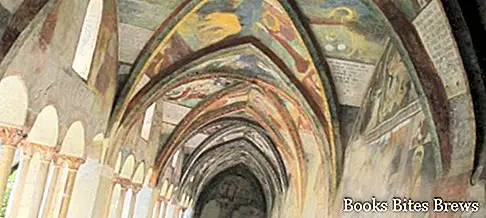What to see in Bressanone, itinerary including the main monuments and places of interest, including the Cathedral, the Church of San Giovanni Battista, the Bishop's Palace and the Diocesan Museum.
Tourist information
Town of Trentino Alto Adige in the province of Bolzano, from which it is 41 km away, Bressanone is home to lively commercial and industrial activities, as well as a renowned holiday resort surrounded by greenery, located between the Isarco valley and the Pusteria valley.
With origins dating back to the 10th century, Bressanone was for many years the capital of South Tyrol, in 1027 its bishop was named vassal of the emperor with consequent investiture to govern the whole territory.
Bressanone passed to Austria in 1803 and was inserted between the territories of Tyrol until 1918.
The Cathedral, dating back to 1200 and located in the homonymous square, was remodeled in the fifteenth century and completely rebuilt around the middle of the eighteenth century.
Outside the Cathedral has a facade inserted between two bell towers and preceded by a vast neoclassical portico.
Inside there are remarkable decorations made with stucco and marble, as well as frescoes and canvases made by local artists.
To the right of the church is the interesting Romanesque cloister, embellished with remarkable frescoes, dating back to the period between the fourteenth and fifteenth centuries, placed on walls and vaults.
From the cloister you can access the Church of San Giovanni Battista, characterized by a frescoed interior.
In the same square where there is the Palazzo Vescovile there is the Palazzo dei Principi Vescovi, a Renaissance-shaped building with two towers and preceded by a moat.
The remarkable courtyard is characterized by arcades and loggias, in the niches of the various pillars there are terracotta statues corresponding to members of the Habsburgs.
Recommended readings- Trentino Alto Adige: Sunday day trips
- Val di Fassa (Trentino): excursions
- Val Pusteria (South Tyrol): what to see
- Dolomites (tourism): where the enchanting peaks are located
- Ortisei (South Tyrol): what to see
What see
Inside the palace there are frescoes painted in the eighteenth century, to see the remarkable portal of the Court Chapel.
The building houses the Diocesan Museum, where a vast collection of works of art is exhibited, as well as a particular collection of nativity scenes made of wood and meticulously carved.
The Church of San Michele, located in Piazza Duomo, was built in the Gothic style, with details still visible on the facade, and subsequently modified according to Baroque forms, before being restored in 1955.
The interior is embellished with frescoes placed in the vault, made in the 1700s.
To the left of the White Tower, which is the fifteenth-century bell tower of the church, is the Porta di San Michele, through which you enter Piazza Parrocchia, where the Casa Pfaundler is located, a remarkable example of a Renaissance building characterized by arcades, mullioned windows, three-light windows and splendid wrought iron railings.
On this side Via dei Portici Maggiore, which forms the heart of the medieval village, where typical Germanic style buildings dating back to the period between the sixteenth and seventeenth centuries overlook.
The excursions to be carried out in the surrounding area include that of the Novacella Abbey, an Augustinian monastery established in 1142, located 3 km away.
Of the abbey complex are very interesting the Romanesque chapel of San Michele, the Church of the Madonna, inside which there are interesting works by local artists, and the cloister, decorated with frescoes.
Nearby is the Velturno Castle, formerly used as a bishop's residence, which is one of the best examples of Renaissance castles.




